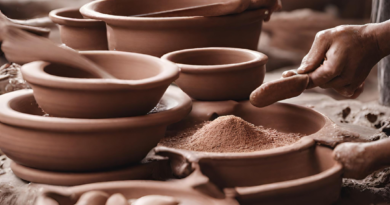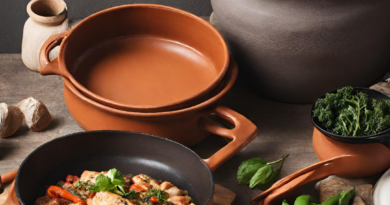How do you season and care for clay cookware?
Cooking with clay pots offers a unique culinary experience, but to fully enjoy the benefits, it’s essential to season and care for your clay cookware properly. Just like cast iron, clay cookware benefits from seasoning and gentle maintenance to ensure its longevity and cooking performance. In this article, we’ll walk you through the steps to season and care for your clay cookware, whether it’s a tagine, cazuela, or any other clay vessel.
Seasoning Your Clay Cookware:
1. Initial Soaking: Before you start seasoning your clay pot, give it an initial soak. Submerge the entire pot in water for at least a few hours or overnight. This helps saturate the clay and prevent it from absorbing too much moisture during cooking, which can lead to cracking.
2. Air Drying: After soaking, remove the pot from the water and allow it to air dry completely. Ensure that there’s no remaining moisture on the surface.
3. Coating with Oil: Once the pot is dry, lightly coat the interior surfaces with a high-smoke-point cooking oil. Suitable oils include vegetable oil, canola oil, or grapeseed oil. Avoid using olive oil or other low-smoke-point oils, as they can burn and create unpleasant flavors during seasoning.
4. Gentle Heating: Place the oiled clay pot in a cold oven, and then turn on the oven to a low temperature, around 200°F (93°C). Slowly increasing the temperature helps the oil to penetrate the clay gradually. Allow the pot to heat for a few hours.
5. Cooling: Turn off the oven and let the pot cool down inside the oven. This gradual cooling prevents thermal shock to the clay, reducing the risk of cracking.
6. Repeating the Process: It’s often recommended to repeat this seasoning process two or three times before using the pot for cooking. Each round of seasoning further seals the clay and enhances its non-stick properties.
Caring for Your Clay Cookware:
1. Hand Washing: Clay cookware should be hand washed with warm water and a soft brush or sponge. Avoid using abrasive scrubbers or harsh detergents, as they can damage the seasoning and the clay’s porous surface.
2. No Dishwasher: Never put your clay cookware in the dishwasher, as the aggressive detergents and high water temperatures can harm the clay.
3. Drying: After washing, allow the clay pot to air dry completely before storing it. Avoid storing it with the lid on, as this can trap moisture and lead to mold growth.
4. Storage: Store your clay cookware in a cool, dry place away from direct sunlight. It’s best to stack your clay pots with paper towels or cloth between them to prevent contact and potential chipping.
5. Pre-Soaking: Before using your clay pot for cooking, especially if it’s been unused for a while, soak it in water for 15-30 minutes. This helps the clay to absorb moisture slowly and prevents it from cracking during cooking.
**6. Low to Medium Heat: Clay cookware performs best with low to medium heat settings. Avoid subjecting it to extreme temperature changes, such as placing a hot pot on a cold surface, as this can lead to cracking.
7. Use Wooden Utensils: When cooking with clay pots, use wooden or silicone utensils to avoid scratching the interior.
8. Avoid Thermal Shock: Never add cold liquids to a hot clay pot, and vice versa. Gradually adjust the temperature to prevent thermal shock, which can lead to cracking.
By following these steps to season and care for your clay cookware, you’ll ensure its longevity and maintain its non-stick properties. With proper care, your clay pot will become a cherished culinary tool that enhances the flavor of your dishes for years to come.



